There has always been a goddess in Christianity, she has been hidden for long enough. Veneration of the Divine Mother continued in pockets of Christian groups who weren’t completely wiped out by agents of Rome. Gnostics, Essenes, Cathars, Celtic Christians, Templars, Rosicrucians and other mystics kept that underground stream from trickling out and kept the flame of the goddess burning into the twenty-first century.
In the oldest stories of many lands, the creative generative essence of the universe is female. We shall look at some forms of the Goddess that were part of Christianity. Yeshua (Jesus) spoke of the Goddess often but the books that mention it unsurprisingly weren’t included in the Bible or were mistranslated to edit out the Goddess. The Church wanted to keep patriarchal control and remove the Goddess from Christianity. She is being revealed.
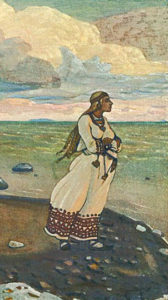 The Goddess in the Old Testament
The Goddess in the Old Testament
Originally Yahweh was spoken of as having a wife, Asherah. There was a common blessing around the time of Solomon ‘Blessed be [name] by Yahweh and his Asherah’. As Raphael Patai said in The Hebrew Goddess, “Of the 370 years during which the Solomonic Temple stood in Jerusalem, for no less than 236 years…the statue of Asherah was present in the Temple, and her worship was part of the legitimate religion.”
The Bible has references to the goddess, for some of them you have to go back to older sources than the King James Bible, such as the Wycliffe Bible, or even better, the originals. She speaks in the Book of Proverbs in the Wycliffe Bible (8:23,30) “From without beginning I was ordained; and from eld times, before that the earth was made… I was making all (these) things with him.”
The Elohim were said to have made mankind in their own image. Elohim is a plural word, the singular is Eloha, the feminine form of El (Lord or God). It is related to the word Allah, and the words Allat and Elat, which pre-Mosaic peoples of the Middle-East used to refer to sacred unity as the great Goddess.
Sophia, the Spirit of Wisdom, is also revered in the Old Testament, especially by Solomon. Wisdom is personified as a woman and as the bride in the Song of Songs. This love poetry is read out in Catholic churches on St. Mary Magdalenes’s day. Solomon also speaks of wisdom as a woman in Proverbs (9:1) “Wisdom hath built her house, she hath hewn out her seven pillars.” Solomon also honors Wisdom in Ecclesiastes: “Wisdom gives life to the one who possesses it”.
 The Holy Spirit
The Holy Spirit
The Holy Spirit is thought to be female. The Greek word for it in the Bible is Pneuma which is gender neutral, but the Hebrew is Ruah and the Aramaic is Shekinah and they are both female words and imply a feminine divine presence. Aramaic is an ancient Hebrew language that was spoken by Jesus. Shekinah appears in sacred texts as the Holy Spirit, spoken of in the Talmud as the manifestation of God in the physical plane. Shekinah was depicted as arguing for compassion towards humans. Originally the Shekinah were female entities who embodied wisdom. Wisdom again, Hokhmah in Hebrew, but more widely known in the Greek, Sophia.
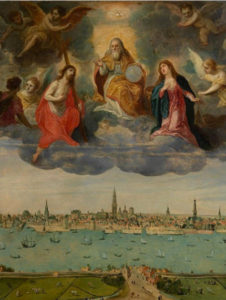 The Goddess in the New Testament
The Goddess in the New Testament
When Jesus said to honor your father and mother he wasn’t talking about Joseph and Mary, when they came in and someone told him his parents were here he denied it saying they were not his parents. He was talking about honoring his heavenly father and mother.
The Wycliffe Bible, the first complete English Bible which pe-dates the King James Bible by centuries, paints a different picture than the Bible we know today. In Matthew’s Gospel (19:19) Jesus says,”Worship thy father and thy mother, and thou shalt love thy neighbour as thyself.” Mark’s Gospel also says to worship them in the Wycliffe version and in Matthew (15:6) Jesus says, “He hath not worshipped his father or his mother; and ye have made the commandment of God void for your tradition!”
Would honoring your birth parents really be more important to the divine than honoring your divine father and mother? Obviously not, so the interpretation of Jesus’ commandments transitioned to love the Lord your God and love your neighbor as yourself.
The idea of the Goddess was common in the ancient world. Judaism had become overly patriarchal and Jesus came to restore the balance. Love was his message, and it’s a message that resonates with the divine feminine. Peter complained about women speaking in church, he was frustrated because Mary Magdalene kept asking Jesus questions, but even St. Paul, in his letter to the Galatians (WYC 4:26), said “Jerusalem that is above, is free, which is our mother.” Paul also said in his letter to the Colossians “’The kingdom of God is within you,’ says Christ. In whom are hid the treasures of sophia and gnosis“.
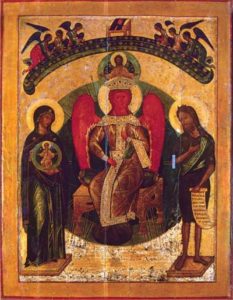 Sophia in the Gnostic Gospels
Sophia in the Gnostic Gospels
The Roman church chose which gospels to include in the Bible at the Council of Carthage for political reasons (the ones which didn’t contradict them, or each other, too much), summarily mistranslating and misinterpreting them. Many gospels pre-date the ones that were included in the Bible, most of them are referred to as Gnostic gospels.
Gnosticism is based on the Greek word ‘Gnosis’ which means knowledge. It is higher, revealed, intuitive, experiential knowledge rather than logical, read, heard, or inferred knowledge. The light of truth frees us from the darkness of illusion. Gnostics believe that salvation comes from enlightenment. The apprehension of Gnosis is higher truth, an expansion of consciousness to connect with the universe and understand deeper truths with your heart not just the rational side of your brain or the five senses, but higher insight, spiritually evolving to unite with the mind of God and Jesus the Logos, the Word of God. Gnosis being a personal experience means Gnosticism is less authoritarian; the truth is apprehended by individuals in their own way. As such the Gnostic groups varied in their beliefs. Wisdom comes directly from Sophia, without the need for hierarchy. Gnostics are seen as dualistic, but most didn’t see the physical world as bad but that one has to awaken from the ignorance of the state of awareness of this plane of existence.
In The Gospel of the Holy Twelve, Jesus said “If thou hast seen thy brother and felt his love thou hast seen the Father; if thou hast seen thy sister and felt her love, thou hast seen the Mother” and “I come from the Father-Mother who sent me.” This reflects the first line of the Lord’s Prayer as translated directly from the original Aramaic by Neil Douglas-Klotz, “O Birther! Father-Mother of the Cosmos.”
Also in The Gospel of the Holy Twelve Jesus says “If ye had known me, ye should have known my Father and my Mother also,” and “In each of you the Fatherhood and the Motherhood may be seen, for the Father and the Mother are One in God.”
This indicates that Father and Mother are aspects of God. An ancient Trinity is Father, Mother, and Son, but each gender has their own Trinity in The Gospel of the Holy Twelve: “A multitude of the heavenly host praising God as Father, Spouse, and Son; One with the Mother, Bride, and Daughter” and “We believe in one Lord our Lady, the perfect holy Christ; God of God, Light of Light begotten; Our Lord, the Father, Spouse and Son; Our Lady, the Mother, Bride and Daughter;… the Father, Spouse and Son of every soul; and that every soul may be perfected as the Mother, Bride and Daughter of God.
In the Pistis Sophia, Sophia is the first feminine principle, a goddess. Pistis Sophia (Faith-Wisdom, Sophia the daughter) falls from grace to Earth when she follows a light she thinks will bring her to the highest place but she is set upon by material powers who deprive her of her own light. She falls into the physical world of darkness. She is redeemed by the Saviour (her consort, Christ) perhaps when he cast seven spirits out of her and helps to redeem her as a goddess. Mary Magdalene is identified in the scripture as Sophia the daughter, the bride of the bridegroom, the consort of the Saviour. Christ comes to redeem his pearl and says she will be “happy beyond every woman who is upon the earth, because thou art she who will become the Pleroma of the Pleroma.”The Pleroma is the fullness of being, the light of truth or the highest plane, Heaven.
In this Gnostic mythology, a dozen pairs of Aeons (gods / planes) were emanated from the Godhead. Barbelo is a feminine term that refers to the first emanation of the divine presence, the “Eternal Aeon, known as “Mother-Father.” The last, thirteenth, pair of Aeons to be emanated were Christ and Sophia, aka Christ-Sophia. Sophia was expelled for seeking forbidden knowledge and Christ had to come and reunite with his other half, so he incarnated as Jesus. What a love story! When Sophia fell she became Mat(t)er, Mother Earth. Jesus showed us how to raise the frequency of the material plane and thus bring us all back to Heaven as we are all children of God.
The Ode of Sophia from The Acts of Thomas paints a beautiful picture of the Goddess: “The Maiden is Light’s daughter; in her the King’s radiance is treasured. Majestic her look, and delightsome; in radiant beauty she shineth. Like to spring flowers are her garments; from them streameth scent of sweet odours. Throned o’er her head the King sitteth, with food free from death feeding them at His table. Truth crowneth her head; Joy sports at her feet. She openeth her mouth as becomes her; all songs of praise she lets stream forth. Two and thirty are they who sing praises; . . . Her tongue is like the entrance veil, moved by them who enter in only. Her neck towereth step-like; the first world-builder did build it. Her hands suggest the band of blessed Æons, proclaiming them; her fingers point toward the City’s Gates. Her bridal chamber doth stream with light, and pour forth scent of balsam and sweet herbs”
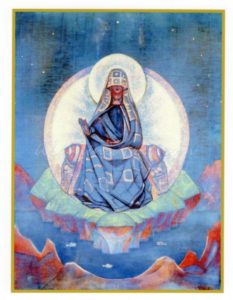 Sophia in the Nag Hammadi codices
Sophia in the Nag Hammadi codices
The discovery of the Nag Hammadi codices in Egypt gave us a wealth of pure, authentic Christian scriptures that hadn’t been mistranslated, including the Gospels of James, Peter, Thomas, and Mary Magdalene who knew Jesus well. They are often referred to as Gnostic Gospels. They paint a similar picture to the Pistis Sophia, The Sophia of Jesus Christ (101:15-18) says “His consort is the Great Sophia who from the first was destined in him for union.”
A few times it refers to Sophia as the consort of God. Unlike the Pistis Sophia, The Sophia of Jesus Christ describes Christ-Sophia as the first begotten. “He reflected with Great Sophia his consort, and revealed his first begotten, androgynous son. His male name is designated ‘First Begetter, Son of God,’ his female name, ‘First Begettress Sophia, Mother of the Universe.’ Some call her ‘Love.’ Now First-begotten is called ‘Christ.’ Since he has authority from his father, he created a multitude of angels.”
In The Sophia of Jesus Christ and On the Origin of the World it tells the story of when Sophia, the Mother of the Universe, created a being without her consort. As we know it takes two to make a baby, without that balance the offspring might be imbalanced. She let fall a droplet of light which she formed into a body. The offspring was Ialdaboath, a deluded demigod or Demiurge, who brought creation down to the third dimension. The last Aeon, Christ-Sophia, whose male nature is known as the Saviour, the Begetter of all, and whose female nature is known as Sophia, Mother of all, who some call Pistis. They incarnated to redeem the world from this base influence. As Jesus says in The Sophia of Jesus Christ (101:15-18) “I have awakened that drop that was sent from Sophia, that it might bear much fruit through me, and be perfected and not again be defective, but be [joined] through me, the Great Saviour, that his glory might be revealed, so that Sophia might also be justified.”
Other books of the Nag Hammadi also mention Sophia, such as The Interpretation of Knowledge and A Valentinian Exposition (39:20-21) which states, “The complete one glorifies Sophia.” In The Gospel of Philip there is repeated symbolism of the Redeemer as bridegroom of Sophia and it also says his angels are the bridegrooms of Sophia’s offspring. The book Eugnostos the Blessed even gives the names of the offspring of these Aeons, all the boys are named a form of “Begetter” and all the girls are named a form of “Sophia.” These are spoken of as celestial androgynous children with two aspects rather than flesh as brother and sister. The second/third century theologian and historian Hippolytus tells a similar story about Sophia and the other Aeons (other early theological historians such as Tertullian and Ireneus also discuss Sophia, denying that Wisdom could be in ignorance and passion).
The Thunder: Perfect Mind (13,16,18) has a poem which espouses characteristics of the Goddess:
I am the first and the last…
I am the whore and the holy one…
I am the mother of my father…
I am the wisdom of the Greeks
And the knowledge of the barbarians…
I am the one who has been hated everywhere
And who has been loved everywhere.
I am the one whom they call Life,
And you have called Death…
The angels, who have been sent at my word,
And of gods in their seasons by my counsel.
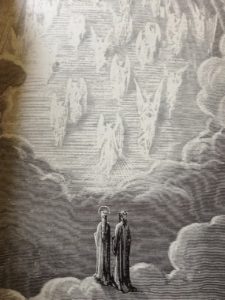 The Goddess in the Essene Gospels
The Goddess in the Essene Gospels
The Essenes were a mystical group that Jesus was part of. They are seen as a sect of Judaism but they’re not because their origin isn’t Judaism, it is older. The Essene Gospels speak of worshipping the most true Wisdom, but they generally speak of the Earthly Mother rather than a celestial goddess. They work with the Angels of the Heavenly Father (the Angels of Power, Love, Wisdom, Eternal Life, Work, Peace, and the Heavenly Father) and the Angels of the Earthly Mother (the Angels of Sun, Water, Air, Earth, Life, Joy, and the Earthly Mother). So the Angels of the Heavenly Father are generally abstract, heavenly principles and the Angels of the Earthly Mother are generally more physical or elemental spirits of manifest creation.
The Essene Gospels speak of the children of Light communing with the Heavenly Father and the Earthly Mother by communing with their angels. They do this by working with the Angels of the Earthly Mother in the daytime and working with the Angels of the Heavenly Father in the evening. The Essene Book of Jesus says “Blessed is the Child of Light who knoweth his Earthly Mother, for she is the giver of life. Know that thy Mother is in thee, and thou art in her.”
The Dead Sea Scrolls were from the Essene community at Qumran. They also mention Wisdom as a Lady in Psalm 154: “For wisdom is given to make known the glory of the Lord and to recount the greatness of his deeds. She is made known to man, to declare his strength to the simple, and to give insight into his greatness to those without understanding, they who are far from her gates, who have strayed from her entrances.”
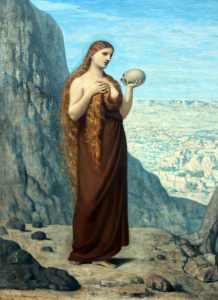 Mary Magdalene
Mary Magdalene
Miriam of Magdala is mentioned more in the Gospels than Mother Mary. She is known as the Apostle to the Apostles, the goddess in the Gospels. Jesus called her ‘Woman who knows all.’ Even in the Bible, Jesus speaks of Mary Magdalene much more highly than even his own mother. Jesus says she will bring light to the world and inherit the Kingdom of Light. An explanation for this can be found in the scriptures identifying her as Sophia, the Spirit of Wisdom. This identification is found in several books of the Nag Hammadi and also in the Psalms of Heracleides in A Manichean Psalm Book. So Sophia’s fall from grace would be the cause of Mary Magdalene’s penitence, not because she was a prostitute.
St. Mary Magdalene was the first one Jesus appeared to after the resurrection, so it was she who brought the message that he is risen. The Gospel of Philip speaks of her as the companion of Jesus and that he used to kiss her often. It contains much symbolism of the bride and the bridegroom. St. Mary Magdalene even has her own Gospel in the Nag Hammadi. Some say she was a princess of the tribe of Dan and a priestess of the triple-towered temple of Mari-Anna-Ishtar, the temple was known as a ‘Magdala’. It was St. Mary Magdalene who anointed Jesus as the Christ, the anointed one, the Messiah.
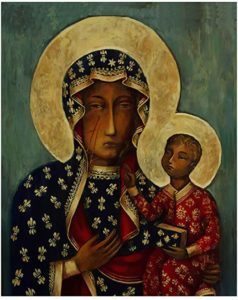 Mother Mary
Mother Mary
For many, Mother Mary is seen as the image of the divine feminine. She has been given titles such as ‘Queen of Heaven’ and ‘Mother of God.’ Her image is reminiscent of the virgin Isis holding the divine savior baby Horus. Mari was the name of the great goddess in the ancient Middle East so there is a certain continuity for the Marys to be the goddesses for Christianity. The scriptures don’t say much about Mother Mary, but she has a special place in the hearts of millions. The Assumption of Mary into Heaven is still celebrated today. In The Apocalypse of Paul, Paul visits Heaven and is welcomed by Mother Mary. When Catholics recite the ‘Our Father’ prayer they also recite the ‘Hail Mary.’
In The Gospel of Bartholemew she is spoken of in exalted language, but she repeatedly asserts her unworthiness to speak next to the apostles. In that gospel she tells of when she lived in the temple and an angel brought her food, manifesting bread and wine from its garment. The Gospel of the Hebrews identifies her as a mighty power that descends from Heaven. It identifies this power as the archangel Michael who was entrusted with the care of the Messiah, and so incarnated as Mary to look after him. (Others say Jesus is Michael.) Mary is said to have been conceived immaculately as well as her son. The Protevangelium of James tells the story of when an angel appeared to the barren St. Anna and told her she would conceive a child who would be spoken of in the whole world. Mary’s perpetual virginity does not mean she never made love with her husband. She had several children; it is unclear if any of them were from a previous marriage of Joseph as some have asserted. Her virginity means she is a pure maiden.
 The Triple Goddess
The Triple Goddess
Goddesses often come in threes, and the goddesses in the Bible are no exception. There are three Marys frequently with Jesus, including at the foot of the cross. Mother Mary, Mary Magdalene, and Mary Cleophas or Mary of Bethany. Mary the sister of Lazarus is thought to be Mary Magdalene, some say Mary of Bethany is Mary Magdalene. Jesus also has a sister called Mary according to the Nag Hammadi. Acts also mentions Mary the mother of John that is named Mark, so it can be unclear who the third Mary is. Many traditions have triple goddesses representing three stages; Maiden, Mother, and Crone. Could this apply to the three Marys or three of the Sophias? The Gospel of the Holy Twelve mentions a Trinity of Mother, Bride, and Daughter which pretty much fits the Maiden, Mother, and Crone model.
Mary would have been pronounced Mariham or Miriam back then, related to Mariamne and possibly to Mari-Anna. The triple goddess Mari-Anna-Ishtar was worshiped in Judea at the time of Christ. Her temple was known for its triple-towered temple or ‘Magdala.’ Much imagery in the gospels regarding the Marys corresponds with the worship of Mari-Anna-Ishtar. Is it a coincidence that the mother of the Virgin Mary is called Anna and that there is a Mary of Magdala? Some speculate that Mary Magdalene was a priestess of Mari-Anna-Ishtar as to why she was called Mary of Magdala. Mari was a name for the great Goddess in the Middle East, like the way St. Brigid replaced the goddess Brigid in Ireland. Many believe St. Brigid was the goddess Brigid. Maybe Mary is the goddess Mari.
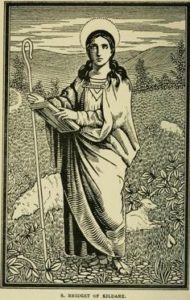 The deep stream
The deep stream
Veneration of the goddess continued as part of Christianity in groups such as Cathars, Essenes, Templars, Gnostics, Rosicrucians, and Celtic Christians. The inner, mystical tradition kept the deeper teachings of Jesus alive. This tradition came through St. John and St. Mary Magdalene who understood the deeper teachings for those with eyes to see the holy light of truth and ears to hear the holy word of Wisdom.
The Cathars were mystical Christians who thrived in the south of France until their influence threatened the Roman church, which had them all killed. They venerated St. Mary Magdalene whose remains are still in the South of France. Some say the Cathars were from the Essenes. William Henry, in the article ‘Secrets of the Cathars,’ said “The Cathars called themselves Pure Ones after the goddess known as the Pure One, their term for the Virgin Great Creator Mother Mari (meaning ‘love’).” They also called themselves the Church of Love, Amor, which was Roma backwards. They called the Roman Catholic church the church of wolves.
Celtic Christians have had a profound connection to the divine for almost two thousand years. St. Joseph of Arimathea, the great-uncle of Jesus, was said to have built a church in England where Glastonbury Abbey stands today. Some say St. Mary Magdalene helped him. A legend says that he brought the blood of Jesus to Celtic Britain in the holy grail. The holy grail, as a receptacle, is a symbol of the divine feminine. The Ceili De, or Culdees, are a group of mystical Celtic Christians that go back to perhaps as early as the first century. It was said they came from the Middle East, some say they were Essenes. Celtic Christians connect with the divine through nature, which they see as conscious.
St. Brigid being one of the patron Saints of Ireland reflects the triple goddess Brigid; goddess of healing, poetry, and blacksmiths. St. Brigid was a healer and patron saint of poets and blacksmiths among other things, coincidence? Her feast day is the second of February, traditionary Imbolc, the Pagan festival of Spring when the goddess Brigid was celebrated. She was also said to be both born and died on that day. Coincidence? Many believe she is an incarnation of the goddess. She is known as ‘Mary of the Gaels.’ St. Brigid reflects the goddess Brigid like the way Mary reflects Mari.
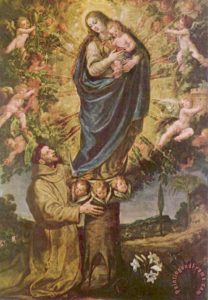 St. Francis
St. Francis
St. Francis communicated a profound love for the divine, he also connected to the divine through nature. He said, “Greetings, O Wisdom, O Queen,” in A Greeting to the Virtues. He said “Blessed be thou, my Lord, for our mother the Earth, who sustains and nourishes us,” in The Canticle of the Sun, and he said “If it is true that I am mad, O supreme Wisdom, the fault is yours. It dates from the day when you wounded me and I made a pact with Love. My self has been taken away and I am clothed in you,” in The Canticle of Love.
 Rediscovering Sophia
Rediscovering Sophia
As we have seen there are many references to the goddess in Christianity. For me, the name Sophia resonates profoundly. Christians can re-establish a connection to the divine feminine without it affecting their Christian faith and those who honor the divine feminine can re-establish a connection to Christ without it affecting their faith in the goddess. The goddess has many names even in these scriptures: Sophia, Silence, Shekinah, Asherah, Pistis-Sophia, Barbelo, Mariham, Eloha, etc. When we know her place in the heart of Jesus we can reintroduce her back to her rightful place so she can take her throne as our Queen. We’re like children who have grown up not knowing we have a mother. We have a Mother. She is here waiting for us.
As it states in The Sophia of Jesus Christ (118:3-7), “Behold, I have revealed to you the name of the Perfect One, the whole will of the Mother of the Holy Angels, that the masculine [multitude] may be completed here.”


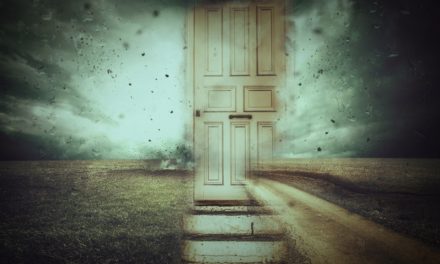

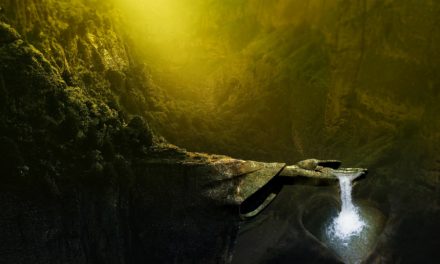
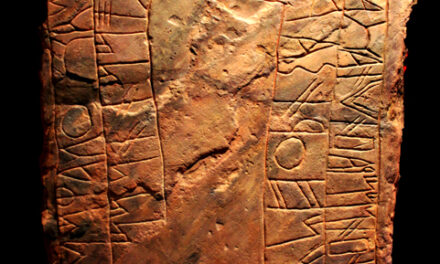

My deepest thanks.
Thank you for sharing such wisdom. Very well written and I hope you keep sharing more. Love and wisdom is what this world needs once again.
Amazing wisdom taught. Thank you for writing this for my journey onto being who I am.
I didn’t know that. I grew up in the states so we don’t get the Wycliffe bible or any older versions.
you are doing the great work, it is so. i rejoice in you.